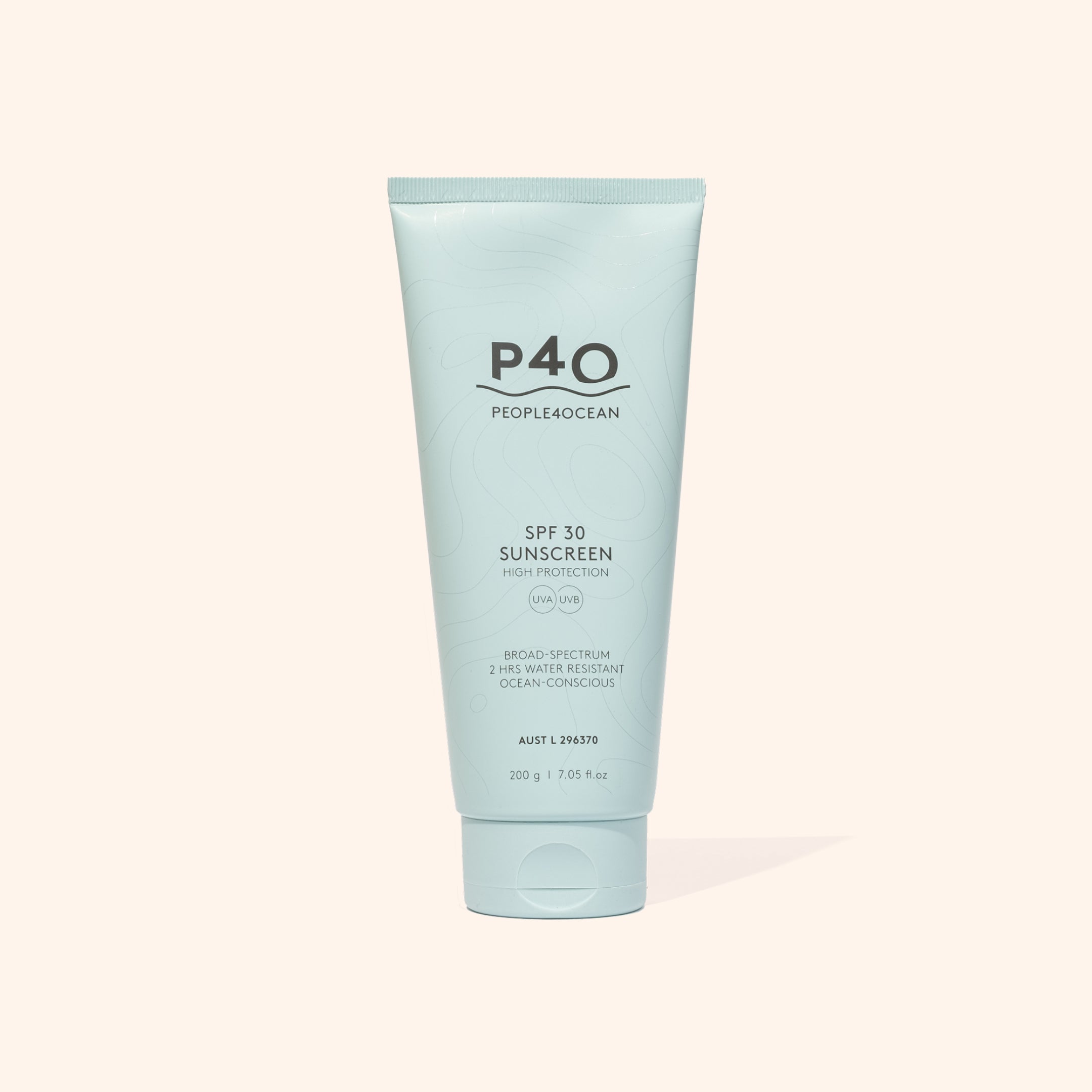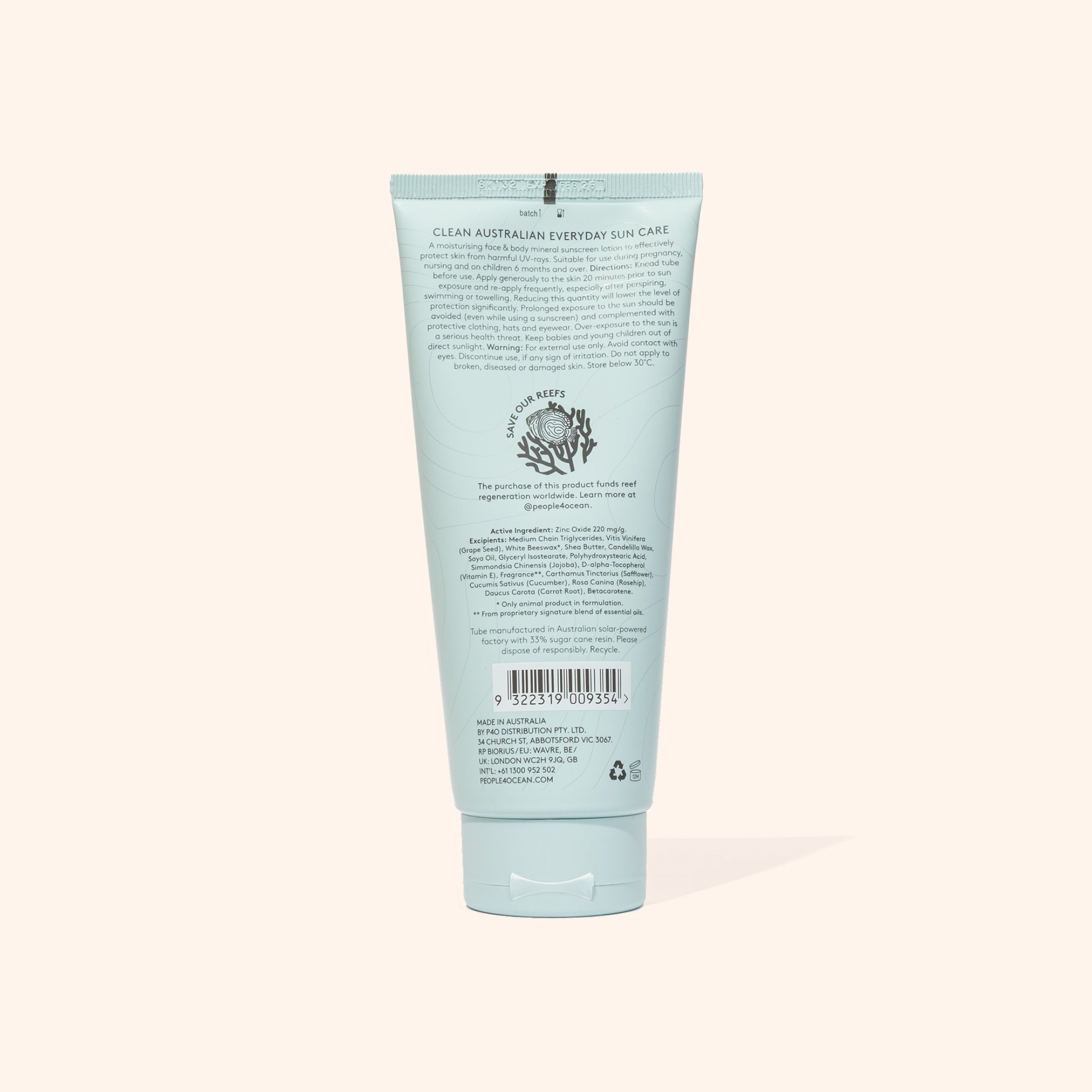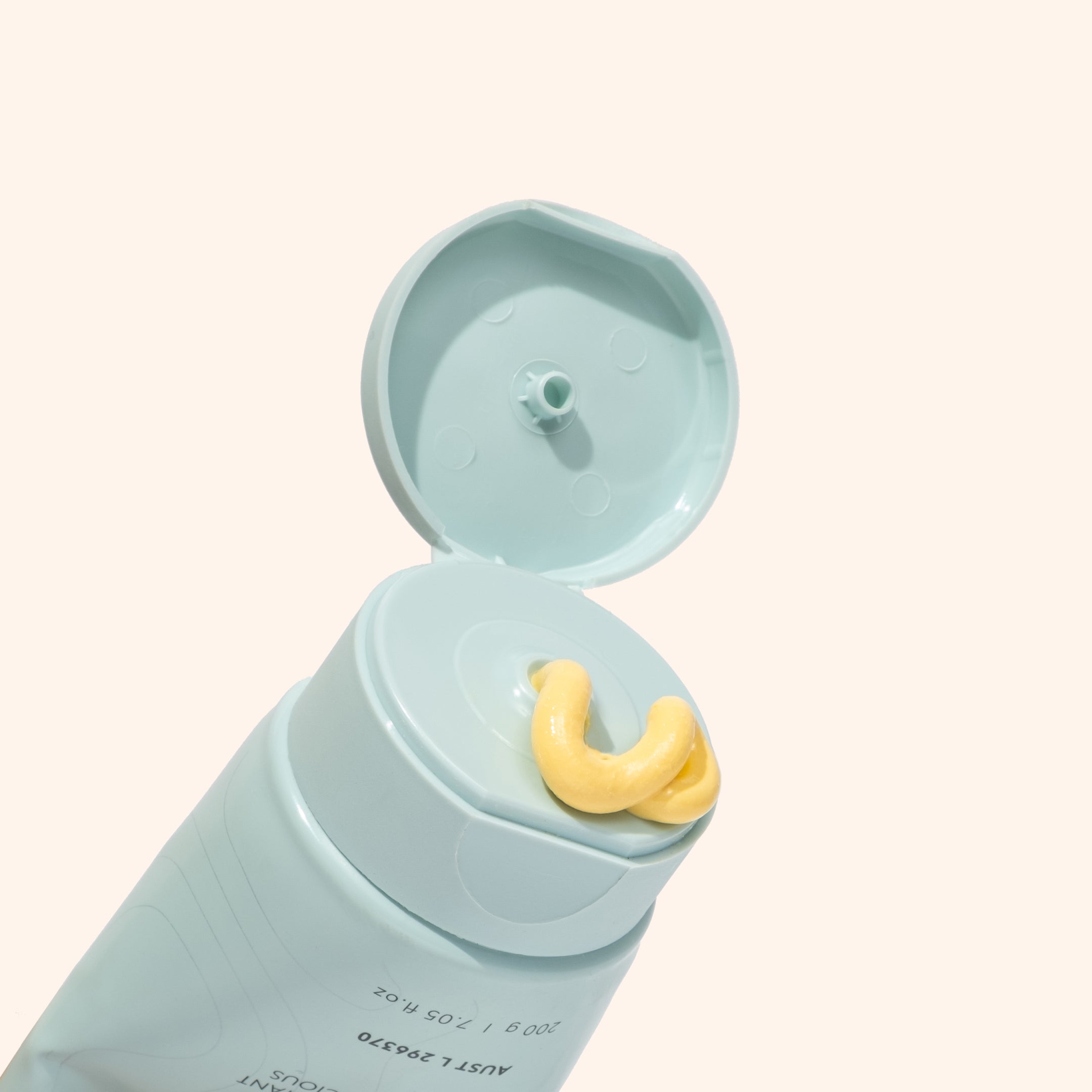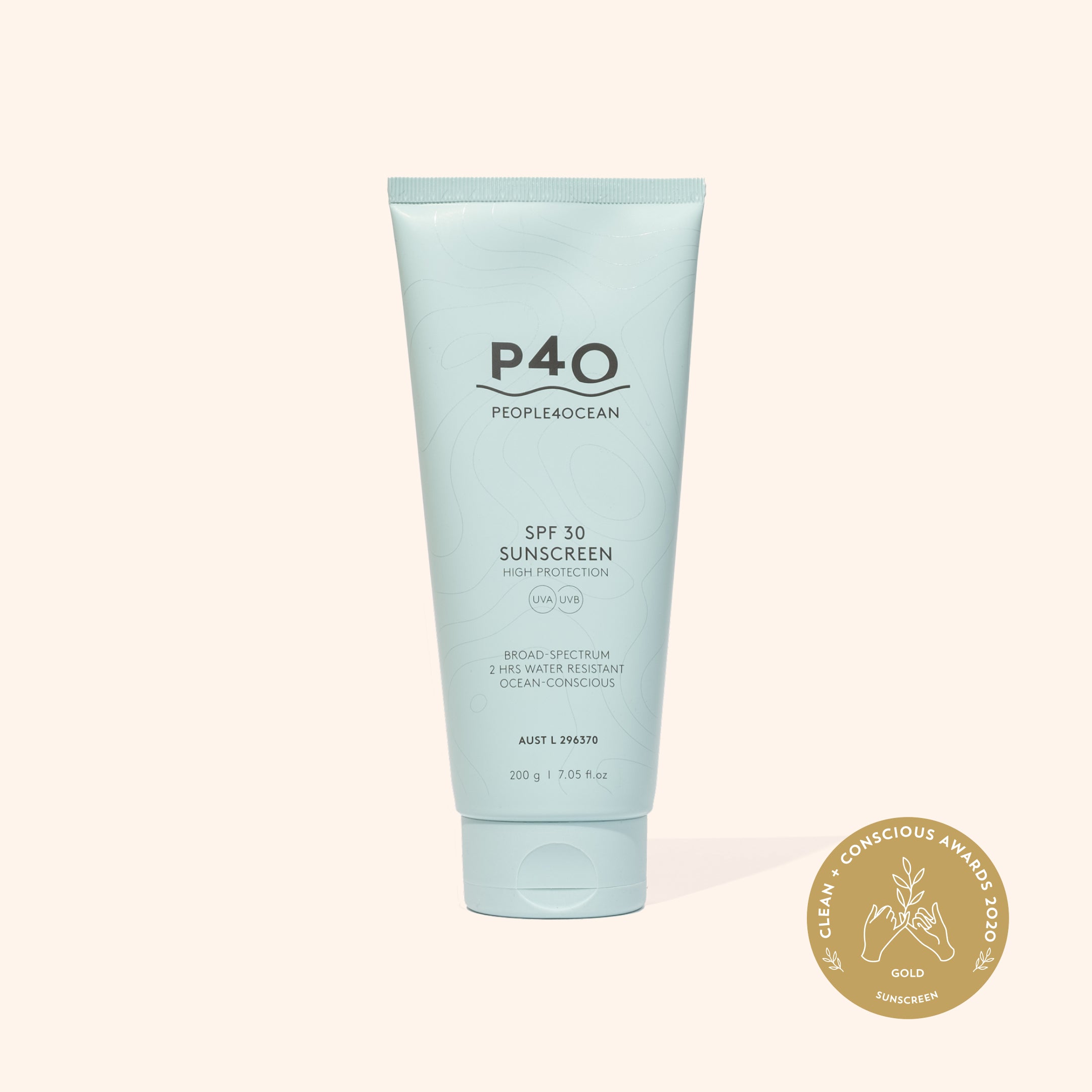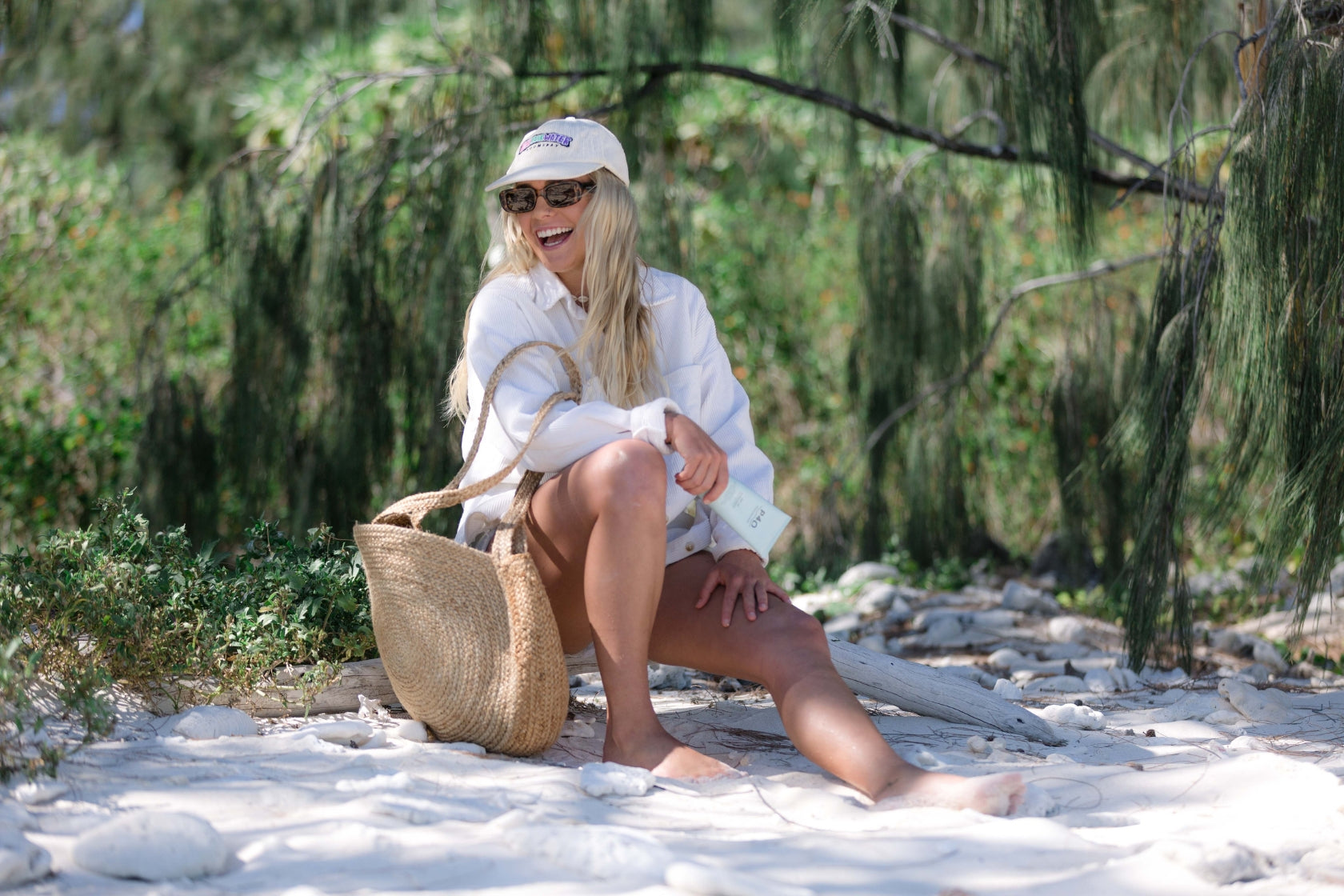People4Ocean Sun Care
SPF 30 Mineral Sunscreen 200 g
A deeply nourishing, all-natural and mineral cream with an iridescent semi-matt finish. Protects against the full spectrum of UV rays, airborne pollutants and blue light damage. The nutrient-rich formula infuses healing botanicals into skin while keeping oxidative stress at bay, enhancing the skin's natural defence against premature ageing and skin cancers while promoting radiance and balance. Lightly scented from proprietary essential oils.
Ingredients
How to use
Benefits
Packaging
FAQ
Questions and Answers
What does reef-safe mean?
Many sunscreens contain ingredients that wash off our skins (or down the drain) to harm coral reefs, even at very small concentrations. Using a "reef safe sunscreen" means that no ingredients in that product will cause detrimental effects to marine life. That includes coral reefs but also marine mammals, turtles, fish and a variety of marine species. Remember that certain brands falsely claim to be "Reef-Safe" but actually contain chemicals harmful to ocean life, so always check the label for these common toxic ingredients: Oxybenzone, Avobenzone, Octinoxate, Homosalate, Octocrylene, Parabens, Triclosan.
Why is this sunscreen yellow?
We infuse this sunscreen with carrot seed oil and beta-carotene. Carrot seed oil (Daucus carota sativa) is a strong antioxidant that is high in vitamins A, C, E and K, making it ideal for mature or sun-damaged skin. We add it to our sunscreen as it is a great emollient and highly nourishing.
How much sunscreen should I apply?
Sunscreen should be the last line of defence after clothing, a hat, shade and sunglasses. Research shows that sunscreens are effective when applied frequently and liberally. The Australian Government Therapeutic Goods Administration (TGA) recommends at least a teaspoon for each limb, front and back of the body and half a teaspoon for the face, neck and ears every two hours. You should apply one cupped adult hand (30 to 40 ml) of sunscreen for an adult body. When using an aerosol can, remember that some of the sunscreen may not land on your skin. This is also why we don't offer aerosol-type products.
Is it Suitable for Sensitive Skin?
This sunscreens is 100% natural, waterless, preservative & toxic-free. Zinc oxide is recognised by the TGA and FDA as the safest sunscreen ingredient, particularly for sensitive and young skin. This sunscreens is also free of artificial fragrance and lightly infused with a proprietary essential oil blend formulated by our dermal clinicians.
Will I get A White Cast?
We use micronised zinc oxide to minimise white cast although darker skin tones may observe a minor cast. An even application and a little extra rubbing helps blend the creams fully. The presence of carrot oil in the SPF 30 sunscreen allows blending on darker skin.
Sometimes, oil comes first when squeezing the tube. What do I do?
Our sunscreen formulas are 100% natural, and free from synthetics and fillers. One of the biggest challenges with natural sunscreen is the natural (and occasional) separation of the oils from the zinc emulsion. When this happens, we suggest kneading product to address any oil separation that may occur.
Is it Pregnancy and Nursing Safe?
The absence of endocrine and reproductive disruptors in our sunscreens make them safe to use from conception all the way to nursing and on children from 6 months of age.


